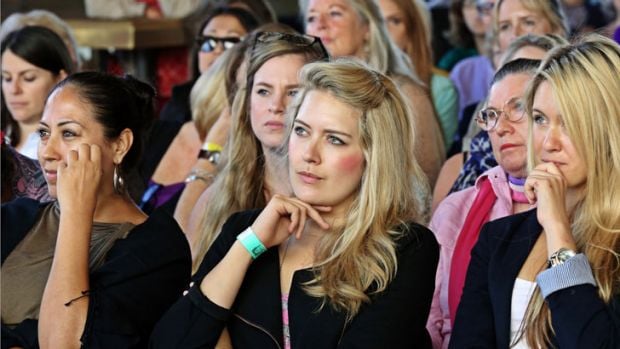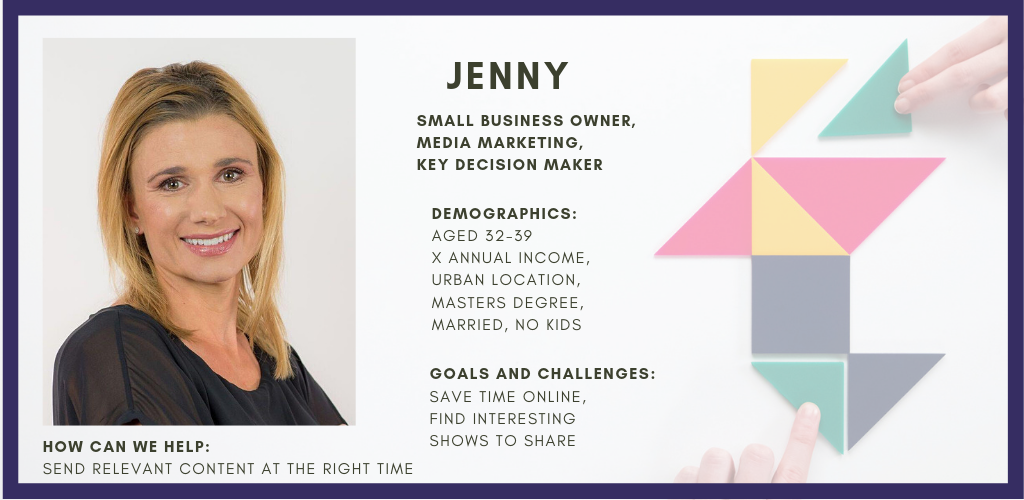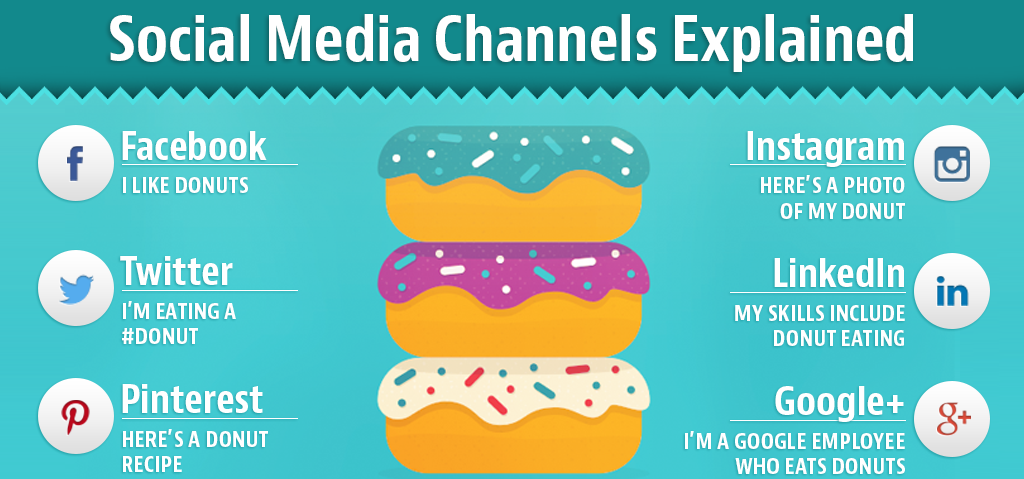Ticketsolve Insights: 80% of Your Purchasers are Women, What Do You Need to do to Attract Them?

Most Ticket Buyers are Women - Why?

Before we get into how to best address women in your marketing, we need to understand what is driving women purchasers.
In almost all societies across the world, women have primary caregiving responsibilities for both children and the elderly (and often, just about everybody else in-between). This does not mean this is their only responsibility nor are we including all women in this statement - but generally speaking women as primary caregivers, also find themselves buying for everyone else in their lives as well.
And this is no short list. Women, while buying for themselves are often buying for friends, husbands, partners, children, their children’s friends, colleagues, adult children, relatives, elderly parents and in-laws.
Just think back to this past Christmas or a previous birthday. Who did the majority of the buying? For us in the arts this means that women are really multiple markets in one. They are the gateway to everybody else.
There is something else about women and ticket buying. While women tend to have a deeper and smaller inner circle, this is layered by a wider social network of support that might include neighbours, coffee morning groups or playgroups, acquaintances and other relations. This wider social network is still important to women and is amplified with social media (we’ll get to why this matters later).
Taking these two points together, women buying for others and having a wide network means that each time you deliver a great experience to a woman, she has a multiplier effect on your organisation because she represents a broad range of other potential customers, and will likely tell people about the great experience you offer.
Translating Data into Strategy
Focus on tendencies not stereotypes

Women are doing the majority of the buying when it comes to arts and culture events, this is clear from the data. There is not one reason for this but several factors at play. The rise of the experience economy, the overall purchase power of women increasing, our devotion to all things digital, social media, women being more focused on relationships (therefore more focused on social planning and outings), or another driver we have yet to uncover. Women may share the audience but they are doing the buying.
That means that we need to approach our buyers a little differently. Men and women are clearly different shoppers, whether on or offline.
To be clear we are not suggesting the programming needs to be totally aimed at female audiences, but it would be smart to ensure that any resources you are spending are tailored towards your purchasers and not necessarily your audiences. A good example of this is the Facebook remarketing, lookalike audience tool.
In order to build a good strategy aimed at women purchasers we need to look at:
-
Who is your female purchaser (consider demographics, where is she from, how old is she, who lives in her household, who else is important to her, who is in her inner circle and her wider network)?
-
What channels are best to reach her?
-
What messages will work best?
-
How do we frame our tone, and language?
-
When is she ready to hear the message?
Our first step in building our strategy is to build a buyer persona and understand who our female purchaser really is.
Building Your Buyer Personas
If you have never built a persona before, it is essentially a short biography of your target buyer. Emphasis on your because your buyer might not be identical to the venue down the street. Persona-driven targeting helps to ensure your strategy and tactics are on message to attract and command attention from your target audience. In this case, we are looking solely at women purchasers. Look at your data and demographics as a start. You may have multiple types of women buyers or you may only have one. If you have multiple you may need to create several personas. Start with a name (keep it a common name found in your group), find an accurate photo, and describe that person in as much detail as you can given the data you have. A video might help to really bring the persona to life. Throw out your assumptions when building personas, let the data do its job to guide you.
Things to think about:
What is her job? Her responsibilities? Her ambitions? Her fears? What are her daily stressors? What makes her happy? What inspires her? How does she travel typically (car, bus, train)? What is her daily schedule like? What are her closest relationships? Who else is in her inner circle? What does she care about? What influences her? What media does she consume? Etc.
Below is an example of a persona you might create for a generic female target demographic. A good exercise is to create personas for all of your target audiences. This will help with understanding your audiences, and more importantly, what content and channels should be used to get the greatest ROI on your campaigns.

You can (and should) go into as much detail as possible with your personas. Strong persona development in the beginning will take the guesswork out of developing campaigns down the road.
Taking Your Strategy a Step Further: Tactics that Work
Understanding who your ultimate purchaser is, is the first step to creating a successful campaign. But nothing here is set in stone, the trick is to keep coming back to your strategy and tactics, question everything, look at the data, throw out your assumptions and refine, refine, refine.
Channels to reach her
Once you have an idea of who your women purchasers are, you can start to look at which channels are best to reach her.
The channels you choose will largely demographics - the biggest factors being gender and age.

Research does suggest that women are more interested in online social networks and interaction, and use social media in part, as social proofing. Using social media as a channel to communicate with women, therefore, allows you to engage and interact with women where they like to be, and also lifts your brands’ social proofing.
Keep in mind, you will need to track ROI on your campaigns via social. If something isn’t working, change it up and try something else. A quick way to check how your purchasers are arriving to your website is through Google Analytics. Within acquisition, you will find your “All Traffic Report” and from there have a quick check of your referrals.
Messages with impact
Besides the basic content, tone and language really matter if you want messages that have impact, and more importantly, spark action.
Broadly speaking target research defines four broad categories of women purchasers, with slightly different drivers.
Social Catalysts
This group represents slightly more than one-third of women. They tend to be planners, and organisers, take pride in their friendship status and consider themselves the expert within their social circle. As a consequence, they tend to be “influencers.” Almost 80% of this group think a night on the town is money well spent, but they are likely to seek out bargains to keep up with the latest trends.

Natural Hybrids
This group of stable and poised women represents about one-third of women, slightly less than the social catalyst group. The natural hybrids seem to operate in a continual state of equilibrium. They know there’s a time and place for everything – a time to spend, and a time to save. Their approach to shopping falls between safe, practical purchases and splurges. They tend to purchase classic products: long-lasting items that aren’t too trendy.

Content Responsibles
About one-fifth of women neither set nor spread trends. This group tends to treat shopping as an errand or chore, rather than a fun experience or an adventure. However, they tend to be lifelong and increasingly loyal customers. 80% do not consider social status an important part of their life. Like most men, these practical, responsible, loyal consumers crave a hassle-free shopping experience.

Cultural Artists
Representing slightly more than 1 in 10, women in this group are considered the “super shoppers,” constantly trying different things and starting new trends. They are the group companies actively seek for new products.

These categories plus your personas can help you create messages that really convert. For example, women (again generally speaking) are hedonic shoppers. That means they are motivated by emotional responses. They want to understand and connect with you as an organisation. However, if one of your personas fall into the content responsibles group, you need to balance the emotional engagement message with a practical and easy to use purchase process.
Regardless of which category or type of persona you go after, there are a few things to keep in mind when targeting women purchasers, regardless of demographic differences.
-
Focus on feelings and emotions - make a connection and really engage.
-
Address her invisible others - consider the other people she is thinking about when purchasing.
-
Keep influencers in mind - social networks and influencers do have an impact on women. Fully 83% say that customer ratings and reviews influence their purchases; 6 in 10 are influenced by recommendations from family and friends; Word-of-mouth moves the needle for about one-third; and Influencers and Instagrammers influence about one-quarter. Influencers and Instagrammers, influence is on the downward trend for all age groups, but still holds more sway over younger audiences.
-
Generation Z/Millennials/Generation X/Boomers - they aren’t the same, so craft your messages accordingly. Each generation expects and wants something subtly different if you can build your message around that you are on to a winner. (Recent research has revealed that more than 7 in 10 Millennial women said that spending on experiences makes them happiest. This outlook is generally in line with other research suggesting that younger generations have an affinity for experiences over products).
-
Offers won’t go unnoticed - women appreciate offers and discounts. In fact, they see them more readily than men and are more likely to make use of a discount than men.
-
Girls watch faces, boys watch objects - when considering images, think carefully about what you use. A study by Simon Baron-Cohen found that there were observable differences when watching boys and girls (even in their infancy): “While most female babies give most of their attention to social stimuli such as human faces and voices, the majority of boys pay most attention to non-social, spatial stimuli—such as the movement of a mobile hanging above a crib. Throughout their lives, male and female individuals continue to manifest these early traits in more and more complex ways.”
Most importantly, be yourself, be honest and be authentic. Regardless of gender, people can smell disingenuous messages a mile away. A quick Google search will show you how brands have shot themselves in the foot with terrible marketing directed at women.

The Full Customer Journey
Of course, your job doesn’t end when you make your sale. The full customer journey from search, compare and purchase to communications before the show, arriving, the experience and service at your venue and after show support and communication matter. 35% of women and only 28% of men are likely to recommend brands and services over a social network - women are more likely to share good (and bad) experiences and are especially happy to give recommendations.
Tracking and Measuring
Finally, tracking and measuring. Ultimately, you need to be able to measure your ROI across all of your channels to gauge the success of your campaigns and tactics.
We have written a lot about data and measuring, but it bears repeating here, that tracking and measuring the success of your campaigns does not need to be complex, but it does need to get done. By really monitoring and measuring your campaigns, you can quickly move off of campaigns that are not working (and save money to boot).
Don’t forget to talk to your customers, get their feedback. Customers like to be heard, give them the chance to do so. Let the data be your guide and your customer feedback provide the context.
Start with Your Data
We admit there is a lot to digest here but the best place to start is with your data; who are your purchasers? Delve into who they are and what they are after; build your personas. Next, look into channels where you can connect with your target personas. Keep in mind what works on one channel may not work on another.
When crafting your messages consider buying behaviours and your buyer’s invisible others, and most importantly be authentic in your messaging. Track, measure and refine as you go, and don’t be afraid to experiment a little.
As always, we are here to lend a hand and can help you as you navigate how best to attract your particular purchasers.
Resources For Parts 1 & 2:
https://www.guided-selling.org/women-vs-men-gender-differences-in-purchase-decision-making/
http://studia.ubbcluj.ro/download/pdf/negotia/2016_2/01.pdf
https://www.marketing-interactive.com/the-rise-of-the-she-conomy/
https://www.businessinsider.com/infographic-women-control-the-money-in-america-2012-2?IR=T
https://www.paymentsense.com/uk/blog/men-vs-women-online/
Categories
Recent posts
Archive
- December 2025 (2)
- November 2025 (1)
- October 2025 (3)
- September 2025 (1)
- August 2025 (3)
- July 2025 (3)
- June 2025 (3)
- May 2025 (4)
- April 2025 (5)
- March 2025 (5)
- February 2025 (4)
- January 2025 (4)
- December 2024 (3)
- November 2024 (5)
- October 2024 (4)
- September 2024 (7)
- August 2024 (5)
- July 2024 (3)
- June 2024 (3)
- May 2024 (3)
- April 2024 (3)
- March 2024 (4)
- February 2024 (5)
- January 2024 (3)
- December 2023 (3)
- November 2023 (4)
- October 2023 (4)
- September 2023 (5)
- August 2023 (3)
- July 2023 (4)
- June 2023 (4)
- May 2023 (5)
- April 2023 (4)
- March 2023 (4)
- February 2023 (5)
- January 2023 (4)
- December 2022 (4)
- November 2022 (3)
- October 2022 (4)
- September 2022 (5)
- August 2022 (2)
- July 2022 (4)
- June 2022 (5)
- May 2022 (4)
- April 2022 (5)
- March 2022 (3)
- February 2022 (4)
- January 2022 (4)
- December 2021 (2)
- November 2021 (3)
- October 2021 (5)
- September 2021 (4)
- August 2021 (4)
- July 2021 (3)
- June 2021 (4)
- May 2021 (2)
- April 2021 (4)
- March 2021 (5)
- February 2021 (4)
- January 2021 (5)
- December 2020 (4)
- November 2020 (4)
- October 2020 (5)
- September 2020 (5)
- August 2020 (4)
- July 2020 (7)
- June 2020 (5)
- May 2020 (5)
- April 2020 (5)
- March 2020 (8)
- February 2020 (4)
- January 2020 (5)
- December 2019 (3)
- November 2019 (5)
- October 2019 (4)
- September 2019 (4)
- August 2019 (5)
- July 2019 (4)
- June 2019 (4)
- May 2019 (5)
- April 2019 (4)
- March 2019 (4)
- February 2019 (3)
- January 2019 (5)
- December 2018 (4)
- November 2018 (8)
- October 2018 (2)
- September 2018 (3)
- August 2018 (5)
- July 2018 (4)
- June 2018 (4)
- May 2018 (1)
- April 2018 (1)
- March 2018 (3)
- February 2018 (2)
- December 2017 (2)
- November 2017 (3)
- October 2017 (4)
- September 2017 (2)
- August 2017 (1)
- July 2017 (5)
- June 2017 (3)
- May 2017 (2)
- April 2017 (3)
- March 2017 (2)
- February 2017 (3)
- January 2017 (3)
- December 2016 (4)
- November 2016 (1)
- September 2016 (1)
- July 2016 (3)
- June 2016 (1)
- May 2016 (2)
- April 2016 (2)
- February 2016 (1)
- January 2016 (3)
- December 2015 (2)
- September 2015 (1)
- August 2015 (2)
- July 2015 (1)
- June 2015 (2)
- May 2015 (2)
- April 2015 (5)
- March 2015 (2)
- February 2015 (2)
- January 2015 (4)
- December 2014 (3)
- November 2014 (3)
- October 2014 (2)
- September 2014 (3)
- August 2014 (3)
- July 2014 (3)
- June 2014 (7)
- May 2014 (6)
- April 2014 (3)
- March 2014 (2)
- February 2014 (1)
- January 2014 (3)
- December 2013 (1)
- August 2013 (1)
- June 2013 (1)
- April 2013 (1)
Sign up for regular updates

